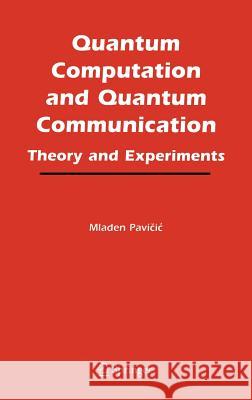Quantum Computation and Quantum Communication:: Theory and Experiments » książka
Quantum Computation and Quantum Communication:: Theory and Experiments
ISBN-13: 9780387244129 / Angielski / Twarda / 2005 / 223 str.
Quantum Computation and Quantum Communication:: Theory and Experiments
ISBN-13: 9780387244129 / Angielski / Twarda / 2005 / 223 str.
(netto: 383,36 VAT: 5%)
Najniższa cena z 30 dni: 385,52
ok. 22 dni roboczych
Dostawa w 2026 r.
Darmowa dostawa!
The attraction of quantum computation and quantum communica tion theory and experiments hes in the fact that we engineer both them themselves and the quantum systems they treat. This approach has turned out to be very resiUent. Driven by the final goal of calculating exponentially faster and communicating infinitely more securely than we do today, as soon as we encounter a limitation in either a theory or experiment, a new idea around the no-go emerges. As soon as the decoherence "demon" threatened the first computation models, quan tum error correction theory was formulated and applied not only to computation theory but also to communication theory to make it un conditionally secure. As soon as liquid-state nuclear magnetic resonance experiments started to approach their limits, solid-based nuclear spin experiments the Kane computer came in. As soon as it was proved that it is theoretically impossible to completely distinguish photon Bell states, three new approaches appeared: hyperentanglement, the use of continuous variables, and the Knill-Laflamme-Milburn proposal. There are many more such examples. What facilitated all these breakthroughs is the fact that at the present stage of development of quantum computation and communication, we deal with elementary quantum systems consisting of several two-level systems. The complexity of handling and controlHng such simple sys tems in a laboratory has turned out to be tremendous, but the basic physical models we follow and calculate for the systems themselves are not equally intricate."











